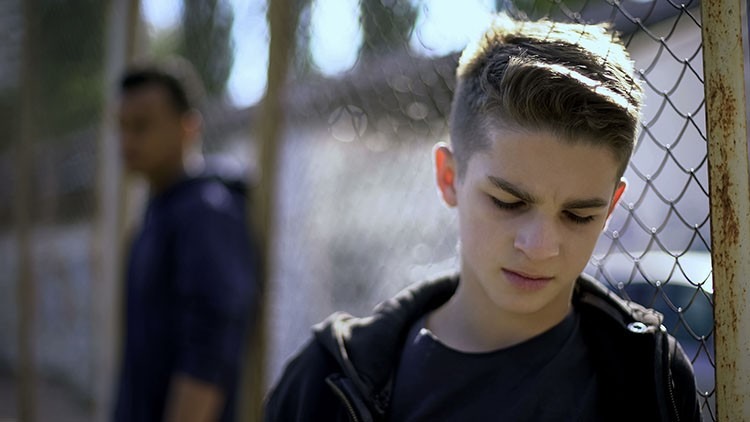Reframing the conversation around young offenders
Getting young people out of dangerous criminal activity such as County Lines drug dealing is a monumental challenge that our police force and youth offending teams are grappling with across the country. The practice is delivering Class A drugs across the UK and fuelling violent crime which has resulted in a hardening of the public stance towards those involved. If we reframe the conversation around such offenders, however, can we begin to realise better results in rehabilitating them?
This was the topic of debate at a recent Academy for Social Justice seminar. There is a stigma attached to criminals and those who have been through the prison system which can make it difficult for them to rehabilitate back into society. Can a shift in public discourse help to deliver better outcomes?
CRIME IS ALWAYS A HOT TOPIC AND IS POLITICISED AROUND ELECTION TIME CONSISTENTLY. IT’S A SUBJECT WE LEARN ABOUT IN THE MEDIA WHEN IT GOES WRONG. THESE DISCUSSIONS ARE OFTEN OVERWHELMINGLY NEGATIVE, WHICH IMPACTS ON REHABILITATION TARGETS AND EX-OFFENDERS BEING ABLE TO SECURE BASIC FACETS OF LIFE SUCH AS EMPLOYMENT, FOLLOWING THEIR RELEASE FROM INCARCERATION.
PENELOPE GIBBS, DIRECTOR OF THE CHARITY TRANSFORM JUSTICE
This is certainly something that we can relate to with youth offending, with children who are arrested conducted activities such as County Lines often going straight back into that lifestyle, even where such drastic intervention as moving them to a new town or city has been enacted.
We are, however, starting to see a shift in the attitude towards these children. The justice system is beginning to understand them as victims, rather than criminals, recognising the reasons why they have become involved in such activities in the first place. This sort of reframing of these crimes will have benefits for those involved and, hopefully, make it easier for them to be placed on a better course.
This reframing has been brought about by understanding. It is very easy to read headlines about escalating gang violence and fear for one’s own safety, without getting to understand where and why it is happening. It is also easy to embrace a harsh position when it comes to punishment – no one wants to think about gangs of machete wielding, drug carrying kids walking their streets.
Whilst the media fuelled much of the early misunderstanding and kneejerk reaction to the problems these youths were facing and perpetrating, it has, over time, played a fundamental role in spreading understanding around County Lines and the reality that those involved face. There have been several good investigative pieces on the topic in Dispatches, BBC News and Sky News, for example.
The programmes spread understanding and made it possible for the justice system to publicly acknowledge some of those involved as victims, not just as criminals.

A recent case highlights this, with the murder of 14-year-old Jaden Moodie in London in 2019 by a 21-year-old rival gang member, Ayub Majdouline. The murder itself was shocking in the most part due to the age of the victim, who had been moved from Nottingham to London to get him away from such gang related activities with which he had been involved with since he was 11.
The initial reaction is one out outrage towards Majdouline, who received a life sentence for the murder and failing to disclose the names of any of his accomplices. But that lack of disclosure hints at the cycle Majdouline himself was stuck in. The son of an alcoholic and drug dependent mother, Majdouline had been at the mercy of a string of sexually abusive stepfathers throughout his childhood. Gang membership had given him a sense of self identity and self-worth, things his life had been entirely devoid of. For someone like him, the story was always likely to end this way. None of that excuses or condones what Majdouline did, but by beginning to understand his circumstances, we can empathise with his plight, begin to understand the wider social issues at play and invest in knowledge about engaging earlier with others like him.
The seminar also touched on another interesting aspect of public perception of criminals – that they choose their lifestyle. Again, this is something that youth offending practitioners are well positioned to debunk. As with the story above, how many 11-year-olds are freely choosing to join gangs and peddle drugs and carry knives?
“There is a similar conversation around drug addiction and obesity,” said Penelope. “If we believe that criminality is indeed a rational, thought-out decision, then it feeds into the notion that we should use punishment as a deterrent. This isn’t a stance supported by any evidence, but the vast majority of people believe it. Reframing the prevalent public attitude to offending is a key battle ground in reducing offending behaviour and the rehabilitation of offenders.”
We’re seeing this reframing in youth justice. Thanks to the tireless work of youth offending teams and their dedicated specialist staff, we have built evidence from a more complete understanding of the young people involved and how they can be helped. Public perception and a reframing of them from criminals to victims is a vital step along this path.